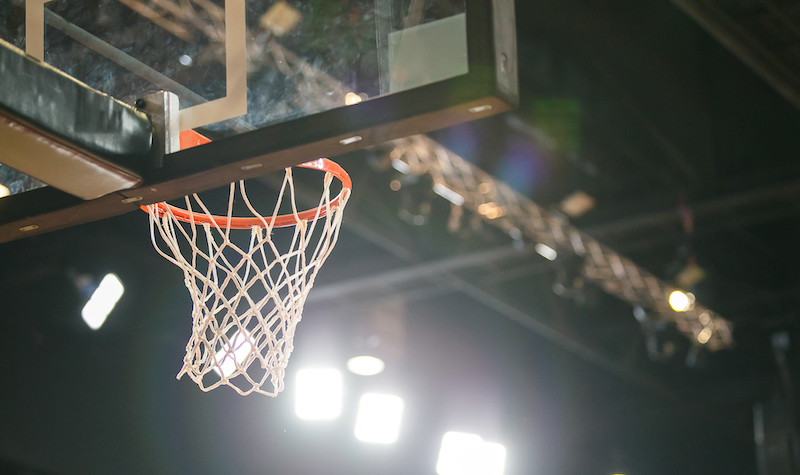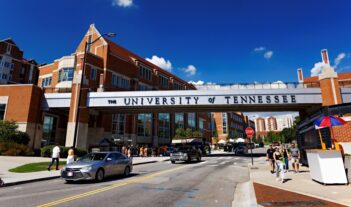
Scholar suggests that the NCAA’s defense of amateurism no longer stands after a recent Supreme Court decision.
College sports are a multi-billion dollar industry. The best college football head coaches, like their National Football League counterparts, pull in millions of dollars a year in guaranteed salaries. Meanwhile, the college athletes they coach are paid nothing. Under National Collegiate Athletic Association (NCAA) “amateurism” rules, college teams are only allowed to compensate their athletes with scholarships that cover the costs of attending school.
Federal antitrust law has historically okayed this practice, even though the NCAA rules “fixing” athletes’ compensation at the cost of attendance would seem to amount to a restraint on competition in violation of the Sherman Antitrust Act.
The NCAA has long argued that its amateurism rules are both necessary and procompetitive. In 1984, the U.S. Supreme Court agreed with the NCAA. But in 2015 a federal appellate court clarified that the NCAA’s amateurism rules are not immune from Sherman Act scrutiny. If the amateurism rules were no longer necessary or procompetitive, the court wrote, they would then be illegal under federal antitrust law.
According to one economist, the NCAA should now no longer be allowed to argue that amateurism is procompetitive after a Supreme Court decision handed down last year. In a recent paper, Ted Tatos notes that, in a recent Sherman Act action filed by college athletes against the NCAA, a federal district court has already cast doubt on the NCAA’s defense of amateurism in light of the Supreme Court’s 2018 decision in Ohio v. American Express. Tatos further suggests that the Court in American Express implicitly overruled its 1984 opinion clearing the NCAA’s amateurism rules under the Sherman Act.
The Supreme Court in 1984 evaluated competition in the market for college sports from two perspectives: the fan side and the athlete side. The Court wrote that fans value college sports because it is a “‘product’ with an academic tradition,” which “makes it more popular” than comparable professional sports. And because fans are drawn to college sports for their amateur “brand,” college sports would lose their unique quality if the players were not unpaid student-athletes.
The Court also said that college athletes benefit from the amateurism rules. According to the Court, college athletes enjoy the opportunity to play in a league that might otherwise not exist but for NCAA rules prohibiting player pay. Reasoning that amateurism rules make college sports possible, the Court found that the amateurism rules were procompetitive.
In his recent paper, Tatos argues that the Court’s 1984 analysis of both the fan and athlete sides of college sports mirrors the “two-sided” market analysis the Court recently upheld, although in a different context, in American Express. Tatos, however, believes that American Express set strict rules for when competition can be appropriately analyzed in a two-sided market framework—specifically, that a Sherman Act defendant must first prove that the relevant market is two-sided—and that the Court’s 1984 analysis of the college sports market broke those rules.
In American Express, the Supreme Court considered whether to allow the American Express Company to use a two-sided market framework to defend its so-called anti-steering contracts with businesses. Amex’s anti-steering contracts prohibited businesses that accept its credit cards from “steering” shoppers away from using its cards.
Several states’ attorneys general and the federal government claimed that the contracts violated the Sherman Act. These contracts raised prices in the credit card transactions market, the states argued, because businesses could not ask their shoppers to use other credit cards that charged businesses lower transaction fees.
Similarly, in their recent litigation against the NCAA, college athletes have claimed that the NCAA violated the Sherman Act—because it keeps the price of its “labor” artificially low by banning colleges from paying their players. The NCAA defended its restrictions on player pay by arguing that it was procompetitive under a multi-sided market analysis, emulating Amex’s defense of its restrictions on businesses before the Supreme Court in 2018.
In American Express, Amex argued that its business model differs from that of its competitors, Visa and Mastercard, which make their money from shoppers’ interest payments. In contrast, Amex said that it competes with Visa and Mastercard by offering better credit card rewards—funded by the higher transaction fees it charges to businesses.
Amex also argued that businesses benefit from its higher transaction fees, despite the anti-steering contracts, because Amex cardholders spend more money—in part because Amex offers better credit card rewards than its competitors. According to Amex, allowing businesses to steer their customers toward non-Amex cards is bad for competition because without its ability to charge higher fees to merchants, Amex’s unique business model could not exist.
The Supreme Court agreed with Amex. “Amex’s business model has spurred robust interbrand competition and has increased the quality and quantity of credit-card transactions,” the Court wrote.
Using American Express as additional support for its defense in the recent antitrust litigation, the NCAA reiterated its decades-old argument that its unique business model could not exist if college athletes were paid. It characterized the market for college sports as a “multi-sided market for college education.”
But American Express notwithstanding, the federal judge presiding over the NCAA litigation rejected the collegiate association’s argument. “In this litigation, the market participants and their interactions are nothing like what the Supreme Court observed in the context of credit-card transactions in American Express,” the judge wrote in a September pretrial ruling.
The judge ruled that, before the NCAA is allowed to use a multi-sided analysis to argue that its amateurism rules are procompetitive, it must first prove that the market for college sports is in fact multi-sided. The NCAA failed to do so, according to the judge.
Unlike Amex, the judge held, the NCAA failed to identify the sides of the market or the single product. And, rather than calculate a price for athletes’ labor that would balance the value they receive from college sports with the value fans receive, the NCAA did not make any calculation, the judge reasoned. The judge concluded that the NCAA simply fixes the price of athletes’ labor at the cost of attendance.
According to Tatos, the judge’s ruling suggests that the NCAA can no longer justify its amateurism rules using a two-sided argument after American Express. The NCAA must then prove that athletes benefit from amateurism rules solely from the perspective of the athlete without examining the rules’ effects on college sports as a whole.
The NCAA’s defenses that did not use a two-sided analysis survive the judge’s ruling but, after trial, the judge reportedly stated that it “seems very clear” that the NCAA violated the Sherman Act. Her opinion in the dispute, In re: National Collegiate Athletic Association Athletic Grant-in-Aid Cap Antitrust Litigation, is forthcoming.



